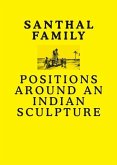The first mirrors in India and other places in the world were probably pools of water and rock or clay containers of water.1 Bronze-made flat or circular mirrors appeared around 2000 BCE during the pre-Vedic Indus Valley civilization at Quetta and Harappa in today's Pakistan and Dholavira in Gujarat, India.2 The reflectivity of these mirrors varied and depended on the proportion of tin mixed with bronze.3 In order to achieve a highly reflective surface they needed to be polished for one or two days.4 Mirrors have been widely used in religious ceremonies and works of art; they are mentioned in poetry, prose, and drama.5 In Vedic society mirrors have been regarded apotropaic. During the wedding ceremony the bridegroom placed a mirror in the left hand of the bride, stating: "Indra's form is here to be looked at because the god corresponds in form to every form." Gonda suggests that this quote from the ¿gveda may imply that the bride 'reflects' the divine or primeval bride.6








